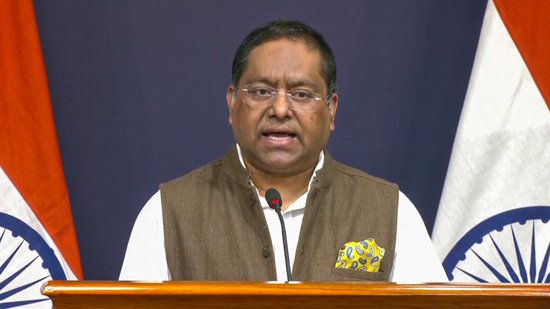Last April, Xi Jinping, president of the People’s Republic of China, said in a speech that in the past five years, China has built “the world’s largest and most complete new energy industry chain.” That was no idle boast. While much of the focus has been on solar, China is also a leader in both onshore and offshore wind. In the month of May alone, China installed enough solar and wind to equal the entire energy needs of Poland.
Lauri Myllyvirta, a senior fellow at the Asia Society Policy Institute, told Amy Hawkins of The Guardian that China installed 93 GW of solar capacity in May. To illustrate how frenetic a pace that is, she said solar installations in China amounted to nearly 100 solar panels a second for the entire month! New wind installations were also impressive at 26 GW — equal to the output of about 5,300 turbines.
In the first five months of 2025, China added 198 GW of solar and 46 GW of wind, which is equivalent to the total electrical needs of Indonesia or Turkey. China now has more than 1,000 GW of installed solar, which accounts for nearly half of all solar capacity in the entire world.
China Has A Plan
China is the world’s biggest emitter of greenhouse gases, primarily because it has relied on coal-fired generating stations for the electricity needed to power its astonishing increase in industrial activity. But unlike the US, it has an active plan to replace those coal plants with renewables. The current US administration is ordering 60-year-old coal facilities to stay open beyond their expected service life. One country is saying, “Yeah, we know coal is bad but we have a plan to move away from it.” The other is ripping up its plans to retire coal and doubling down on the most polluting (and costly) way of making electricity ever invented.
China promotes an ultra-competitive economic approach. While it is true the government provides many incentives to get new industries started, once in operation, those businesses either flourish or die. There is no running to Beijing for western style bailouts. We are seeing this play out in the automotive sector, where aggressive price wars by the market leaders are driving other companies out of business.
The same thing is happening in China’s solar panel industry. As a nation, it may be installing 100 solar panels every second of every day, but those panels are often being sold at or below the cost of manufacturing them. As my former business partner liked to say, “You can’t buy apples for 25 cents apiece, sell them five for a dollar, and expect to make up the difference with volume.”
In the first quarter of 2025 China’s five biggest solar companies reported a combined loss of over 8 billion yuan ($1.14 billion), according to Bloomberg. At a recent conference, Yang Liyou, the general manager of Jinneng Technology, described the industry as being in a “death cycle,” according to Chinese media.
While it is fashionable these days to pretend that all business wants is to be left alone to do business, the truth is more nuanced. National policies in every country have a direct bearing on the success or failure of every industry. Such policies were a prime factor in Japan becoming a major manufacturing nation. The European Union and South Korea provide major policy support to their native industries. The United States spends half its nearly trillion dollar defense budget every year defending sea lanes so oil and methane tankers can complete their journeys.
Republican Attack On Solar
At this very moment, the fate of the 30% solar tax credit is being determined by the United States Congress where Senate Republicans want to terminate it at the end of this year. Doing so, of course, will mean US carbon emissions remain higher for longer. Some Republican Senators have suddenly woken up to the fact that the solar industry employs a lot of people in their districts. Eliminating the solar credit will do substantial damage to the solar industry, which means a lot of laid off workers will be going to the polls feeling none too happy with the members of Congress who are up for reelection.
According to Bloomberg, Senator Kevin Cramer of North Dakota told reporters on June 24, 2025, that Republicans on the Senate tax writing committee were considering making a slate of clean energy tax credits “more generous, including by pushing back their expiration dates. Lawmakers are also discussing changes for rooftop solar credits,” he said.
If Cramer is correct, that would be a major reversal of the anti-solar provisions of the stupidly named Big Beautiful Bill supported by America’s failed president. Bloomberg says the draft version of the Senate tax and spending legislation proposes an abrupt end to a tax credit for solar leasing companies and homeowners who buy panels outright. It would also cut off solar leasing from another key incentive. The House version of the bill would end tax incentives for rooftop solar companies as well.
The solar industry in the US is already teetering on the brink of collapse, largely as a result of the abrupt policy changes initiated by an administration that is doing everything in its power to reward the fossil fuel companies that paid big money to put the Red Team in office. When I was growing up in Providence, RI — the home of the Mafia in New England — such conduct was known as graft and corruption. The FBI put people in jail for doing stuff like this. See Abscam for more on this topic. But today it is business as usual and nobody raises an eyebrow when it happens.
What is particularly distressing about all this foofaraw over solar is that the incentives in place are working as intended and helping the US reduce its dependence on thermal generating technologies that every year spew millions of tons of carbon dioxide and other pollutants into the air we breathe.
US Battery Storage Sees Robust Growth
We now know that storage batteries are essential to make renewable energy dispatchable. According to the latest US Energy Storage Monitor developed by Wood Mackenzie and the American Clean Power Association, the American energy storage market experienced record growth in Q1 2025, despite the current policy uncertainty. Here are the key findings of that report:
- Utility-scale segment led with over 1.5 GW of new capacity — a 57% increase compared to Q1 2024
- Geographic diversification is accelerating beyond Texas and California, with Indiana adding 256 MW and quadrupling its operational storage capacity
- Residential storage broke records with 458 MW installed, driven by continued expansion in California and Puerto Rico
- Storage pipeline remains strong with over 15 GW/49 GWh expected across all segments in 2025
- Policy uncertainty threatens 29% market contraction in 2026 if Investment Tax Credit access is reduced
- Energy storage was the second most deployed resource in Q1 2025, demonstrating critical reliability value
The combination of utility-scale and residential storage accounted for a 57% increase compared to Q1 in 2024. “Surging energy demand is putting the electric grid under strain. The energy storage market is responding to help keep the lights on and support this unprecedented growth in an affordable and reliable way,” said John Hensley at ACP. “Policy uncertainty is now one of the most significant risks that remains on the horizon as we tackle a balanced approach to allowing our economy to expand while maintaining the energy reliability that Americans deserve.”
Until recently, energy storage news was largely confined to the states of California and Texas, but now other states are getting in on the action. Thanks to clear state policies, Indiana is now becoming active in the battery storage space. It added 256 MW of new storage to the grid in Q1 2025, effectively quadrupling its operational storage capacity. Indiana has more than 10 GW of new storage active in the interconnection queue, making it the fifth largest storage queue in the country.
“We’re now seeing significant deployment of energy storage resources in emerging markets like Indiana, while states across the Southwest like Nevada and Arizona continue to expand their energy storage portfolio,” said Noah Roberts of ACP. “Energy storage was the second most deployed resource in Q1 2025, demonstrating its unique ability to be quickly built to address critical reliability needs.”
“The Q1 2025 results demonstrate the demand for energy storage in the US to serve a grid with both growing renewables and growing load. However, the industry stands at a crossroads, with potential policy changes threatening to disrupt this momentum,” said Allison Weis, the lead energy storage analyst at Wood Mackenzie. “It’s crucial that policymakers understand the importance of stable, supportive policies for the continued expansion of energy storage.”
The Fossil Fuel Religion
Crucial, yes, but in a country where fossil fuels are now a religion that everyone in the Republican party slavish follows, common sense and logic count for little. Owning the libs and countering the woke mind virus are more important, even if tens of thousands of renewable energy workers lose their jobs as a result.
In a comparison between the US and China to see which is more likely to achieve a significant reduction in the emissions that contribute to a hotter planet, China is very much in the lead and pulling away, which should be an embarrassment to US political leaders. That it is not only illustrates the extent of the problem.
Sign up for CleanTechnica’s Weekly Substack for Zach and Scott’s in-depth analyses and high level summaries, sign up for our daily newsletter, and follow us on Google News!
Whether you have solar power or not, please complete our latest solar power survey.
Have a tip for CleanTechnica? Want to advertise? Want to suggest a guest for our CleanTech Talk podcast? Contact us here.
Sign up for our daily newsletter for 15 new cleantech stories a day. Or sign up for our weekly one on top stories of the week if daily is too frequent.
CleanTechnica uses affiliate links. See our policy here.
CleanTechnica’s Comment Policy









